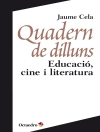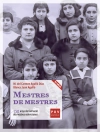There are many approaches to researching the difficulties in learning that students experience in the key areas of literacy and numeracy. This book seeks to advance understanding of these difficulties and the interventions that have been used to improve outcomes. The book addresses the sometimes complementary and sometimes contradictory results, and generates new approaches to understanding and serving students with difficulties in literacy and numeracy. The book represents a departure from conventional wisdom as most scholars and graduate students draw upon ideas from only one of the three domains focal in the book and usually from one single or dominant theoretical frame. Typically, readers will affiliate with reading education, mathematics education, or learning disabilities and belong to one of the corresponding professional associations such as IRA, NCTM, or CLD. This book’s scope will open a scholarly forum for engaging readers with a familiarity with one of these domains while providing insight into the others on offer in the book.
สารบัญ
Contents.- Acknowledgements.- About the contributors.- List of figures.- List of tables.- Chapter 1: Theoretical frameworks and ways of seeing: Operating at the intersection—literacy, numeracy and learning difficulties.- Chapter 2: Learning difficulties, literacy and numeracy: Conversations across the fields.- Chapter 3: Researching the opportunities for learning for students with learning difficulties in classrooms: An ethnographic perspective.- Chapter 4: The new literacies of online reading comprehension: New opportunities and challenges for students with learning difficulties.- Chapter 5: Literacy, technology and the Internet: What are the challenges and opportunities for learners with reading difficulties, and how do we support them in meeting those challenges and grasping those opportunities?.- Chapter 6: Essential provisions for quality learning support: Connecting literacy, numeracy and learning needs.- Chapter 7: Reading the home and reading in school: Framing deficit constructions as learning difficulties in Singapore English classrooms.- Chapter 8: Parent, family and community support for addressing difficulties in literacy.- Chapter 9: Enhancing reading comprehension through explicit comprehending strategy teaching.- Chapter 10: The writing achievement, metacognitive knowledge of writing and motivation of middle-school students with learning difficulties.- Chapter 11: The role of self-monitoring in initial word recognition learning.- Chapter 12: Effective instruction for older, low-progress readers: Meeting the needs of Indigenous students.- Chapter 13: Actualising potential in the classroom: Moving from practising to be numerate towards engaging in the literate practice of mathematics.- Chapter 14: Effective instruction in mathematics for students with learning difficulties.- Chapter 15: Language, culture and learning mathematics: A Bourdieuian analysis of Indigenous learning.- Chapter 16: ‘She’s not in my head or in my body’: Developingidentities of exclusion and inclusion in whole-class discussions.- Chapter 17: Breaking down the silos: The search for an evidentiary base.- Index.












